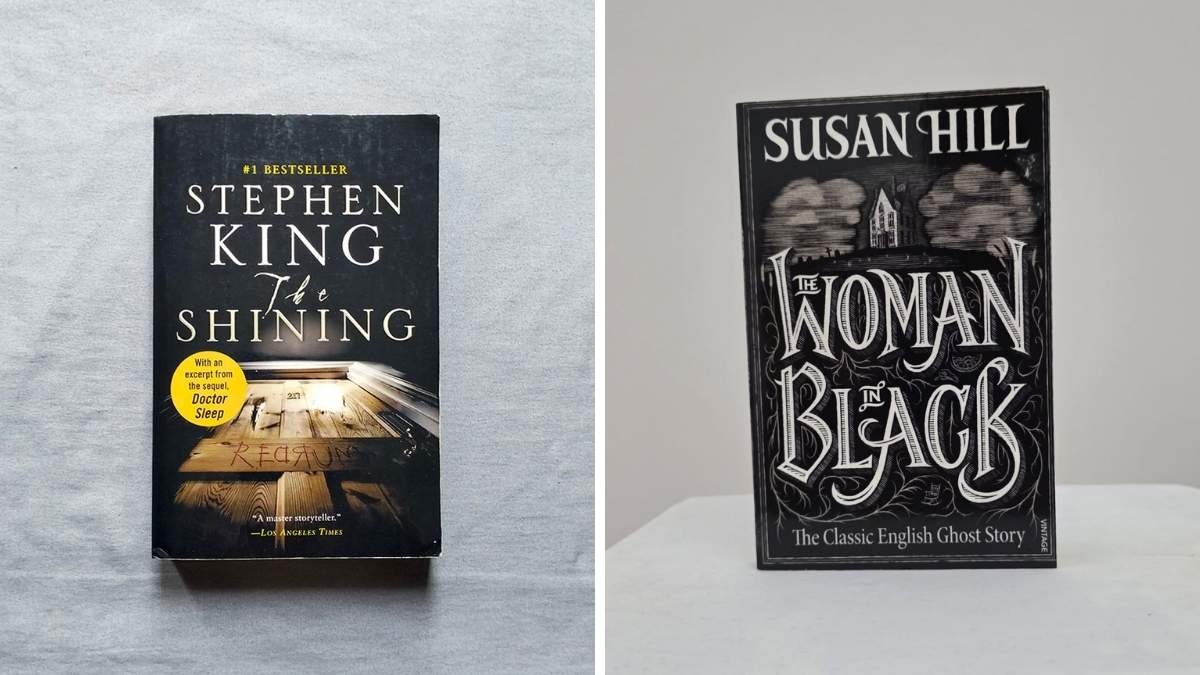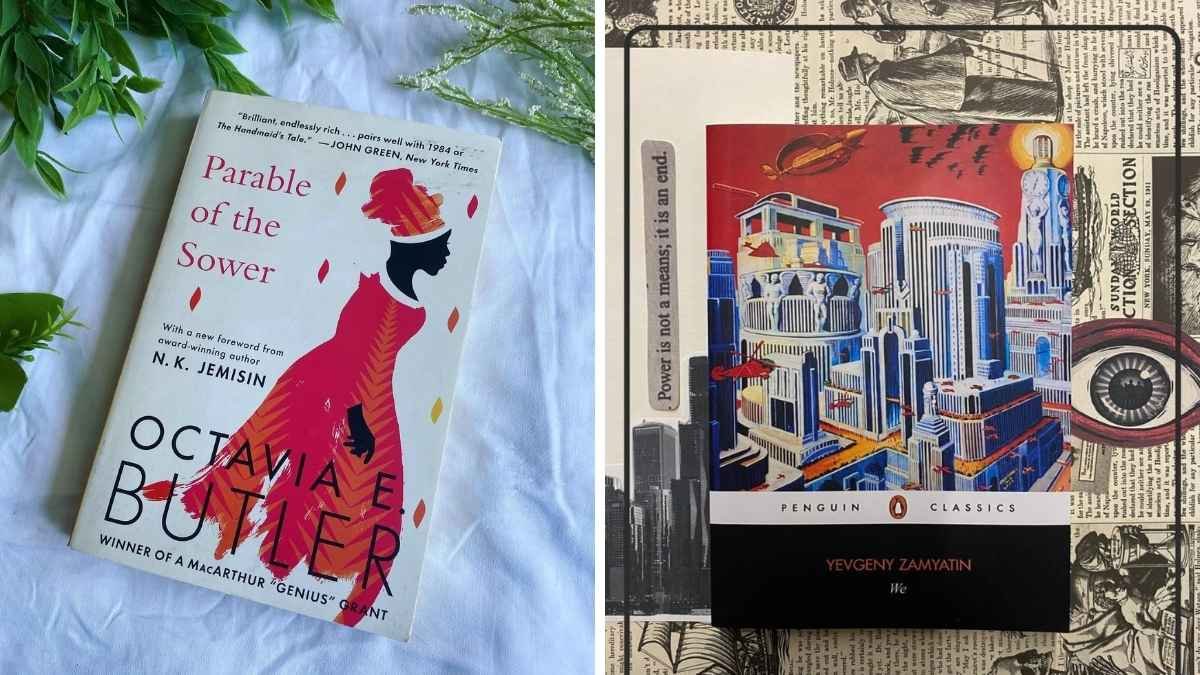
Horror novels aren’t just about jump scares or blood-soaked pages—they’re about psychological chills, existential dread, and the kind of lingering unease that sticks with you long after the final page.
These books don’t just scare you; they challenge you to confront the darkness lurking in the corners of your mind. If you dare, grab a flashlight (or a stiff drink), settle in, and discover why these titles have haunted readers for decades.
1. The Shining by Stephen King

Stephen King’s masterpiece isn’t just about a haunted hotel—it’s a razor-sharp exploration of rage, isolation, and the fragility of the human psyche. Jack Torrance’s descent into madness as he tends to the Overlook Hotel is unsettling because it feels real. The hotel isn’t just a backdrop for ghosts; it’s a malevolent force that preys on Jack’s latent violence and alcoholism. The bone-chilling imagery (like the blood elevator or the hedge maze) sticks with you, but the true horror lies in how relatable Jack’s unraveling feels. King’s ability to blend supernatural terror with domestic tragedy makes this book a benchmark for psychological horror.
Critics and fans alike agree: The Shining isn’t just a horror novel—it’s a dissection of toxic masculinity. Even if you’ve seen the Kubrick film, the book’s visceral, relentless pacing will leave you questioning how someone you pity can become someone you fear. “King’s prose is a knife,” writes one reviewer, “cutting through the facade of normalcy to reveal the rot beneath.”
2. It by Stephen King

Before Pennywise became a popcorn-munching movie villain, he was the embodiment of childhood terror in King’s It. Set in the sleepy town of Derry, Maine, this epic saga follows the Losers’ Club—a group of kids menaced by a shape-shifting evil that feeds on fear. What makes It so unnerving isn’t just the gory encounters with the clown, but the way King taps into universal childhood anxieties: bullies, parental neglect, and the helplessness of being small in a big, indifferent world.
The novel’s genius lies in its duality. Pennywise isn’t just a monster—he’s a mirror reflecting the darkest parts of humanity. King forces readers to confront the idea that evil isn’t always external; sometimes, it’s the cruelty we inflict on one another. “This book isn’t just scary,” says a longtime fan, “it’s a reminder of how quickly innocence can be stolen.”
3. The Haunting of Hill House by Shirley Jackson

Shirley Jackson’s seminal ghost story is less about ghosts and more about the slow unraveling of reality. Hill House itself is the protagonist—a decaying mansion with a sinister reputation that seems to choose its victims. When Eleanor Vance, a lonely woman with a traumatic past, joins a paranormal investigation, the line between hallucination and haunting blurs.
Jackson’s prose is elegantly disorienting, leaving readers questioning whether the house’s malevolence is real or a manifestation of Eleanor’s fractured mind. The novel’s true horror is its exploration of loneliness and the human tendency to self-destruct. “Hill House isn’t just haunted,” writes critic Megan Vaughan, “it’s hungry.” The book’s ambiguous ending lingers like a bad dream, haunting readers long after they’ve closed the cover.
4. The Exorcist by William Peter Blatty

Based on a real-life exorcism case, The Exorcist is the ultimate battle between faith and demonic possession. The story follows Regan MacNeil, a 12-year-old girl whose possession by a vengeful spirit escalates from eerie scratches to horrific physical contortions and supernatural phenomena. What sets this book apart from its film adaptation is Blatty’s deep dive into the psychological toll on Regan’s family and the priests tasked with saving her.
Readers often cite the gritty realism of Blatty’s writing—graphic medical details, religious debates, and the terrifying ordinariness of Regan’s descent—as the book’s most disturbing elements. One fan recalls, “The Exorcist isn’t just scary because of the demons; it’s scary because it makes you wonder if evil is real and if God is silent.”
5. Misery by Stephen King

A horror novel masquerading as a psychological thriller, Misery flips the “fan obsession” trope into something terrifying. Paul Sheldon, a celebrated author, crashes his car in a remote Colorado town and is rescued by Annie Wilkes, his “number one fan.” But Annie’s adoration curdles into obsessive control when she discovers Sheldon’s latest book “kills off” her favorite character, Misery.
King’s brilliance here lies in making Annie relatable yet monstrous. She’s a nurse, a widow, and a self-proclaimed “good person”—yet her love for Sheldon’s work becomes a weapon. The claustrophobic tension of Paul’s captivity, coupled with Annie’s erratic behavior, makes this book a masterclass in psychological terror. As one reader put it, “Annie isn’t a villain; she’s a tragedy. And that’s what makes her so damn scary.”
6. House of Leaves by Mark Z. Danielewski

A book about a book about a film that doesn’t exist—House of Leaves is a labyrinth of horror that will make your brain hurt in the best possible way. The story follows Zampanó, a blind author writing about a documentary called The Navidson Record, which chronicles a family moving into a house that defies the laws of physics. The house has impossible geometry, doorways leading to black voids, and a staircase that descends forever.
What makes this novel truly unique is its experimental format—footnotes spiral into tangents, pages are printed sideways, and entire sections are blacked out. The claustrophobic typography mirrors the characters’ descent into madness. One reader described it as “a horror novel that attacks you visually as much as narratively.” The book forces you to question: Is the house a metaphor for trauma, or is it something more… hungry?
7. The Turn of the Screw by Henry James

First published in 1898, this novella is the granddaddy of unreliable narration. A young governess arrives at isolated Bly Manor to care for two charming children—and soon begins seeing the ghosts of the estate’s deceased servants. But here’s the twist: The governess might be the unstable one, projecting her repressed desires and fears onto the innocent children.
James never confirms whether the ghosts are real or figments of the governess’s imagination, creating a psychological tightrope that leaves readers debating for decades. Critic Harold Bloom called it “the most ghostly of all ghost stories,” while modern readers often cite its subtextual sexuality as truly disturbing. The ambiguity is the horror, making you question whether evil exists in the world or if we summon it through our darkness.
8. We Have Always Lived in the Castle by Shirley Jackson

Jackson’s final novel is a gothic masterpiece told through the eyes of 18-year-old Merricat Blackwood, one of the few survivors of a family poisoning. Merricat and her sister Constance live in near-isolation, cared for by their Judge’s grandfather. The story is a delicate dance of innocence and malevolence, as Merricat’s childlike narration hides horrifying truths.
The true terror lies in Merricat’s unreliable storytelling—she describes bizarre rituals (burying aluminum foil dolls, leaving offerings for the dead) with such matter-of-factness that you’re never sure if she’s a victim or a villain. Jackson’s genius is making you root for a narrator who might be a murderer. As one reviewer noted, “Merricat isn’t just a character; she’s a riddle wrapped in a fairytale voice.”
9. The Woman in Black by Susan Hill

Susan Hill’s The Woman in Black is a masterclass in atmospheric dread, delivering the kind of slow-burn horror that seeps into your bones. The story follows Arthur Kipps, a London solicitor dispatched to settle the estate of a reclusive widow in the isolated village of Crythin Gifford. Upon her funeral, he notices a gaunt, spectral figure—the **Woman in Black—**lingering at the graveside. Soon after, strange occurrences plague the village: children dying in mysterious accidents, a curse tied to the woman’s tragic past, and a creeping sense that evil is watching from the marshes.
What sets Hill’s novel apart is its unreliable narrator, who grapples with rationalizing the supernatural while his own guilt and grief blur reality. The book’s strength lies in its chilling atmosphere—the creaking Eel Marsh House, the encroaching mists, and the haunting cries of distant birds. One reader aptly described it as “a ghost story that feels like a nightmare you can’t wake up from.” The Woman in Black isn’t just a figure of fear; she’s a symbol of repressed trauma, making this novel as psychologically resonant as it is terrifying.
10. The Lying Game by Ruth Ware

A modern psychological thriller with a twist of unreality, The Lying Game follows Claudia, a woman who fakes her death and assumes a new identity—only to become entangled in a web of deception involving a wealthy family and a missing heiress. As Claudia’s lies spiral out of control, the line between reality and fabrication blurs terrifyingly.
The novel’s power lies in its gaslighting narrative—you’re never sure if Claudia is a master manipulator or a victim of her delusions. The twists aren’t just plot devices; they mirror the protagonist’s fractured psyche. One critic noted, “Watson’s brilliance is making you question your perception as a reader.” The ending will leave you breathless—and questioning everything you thought you knew.






